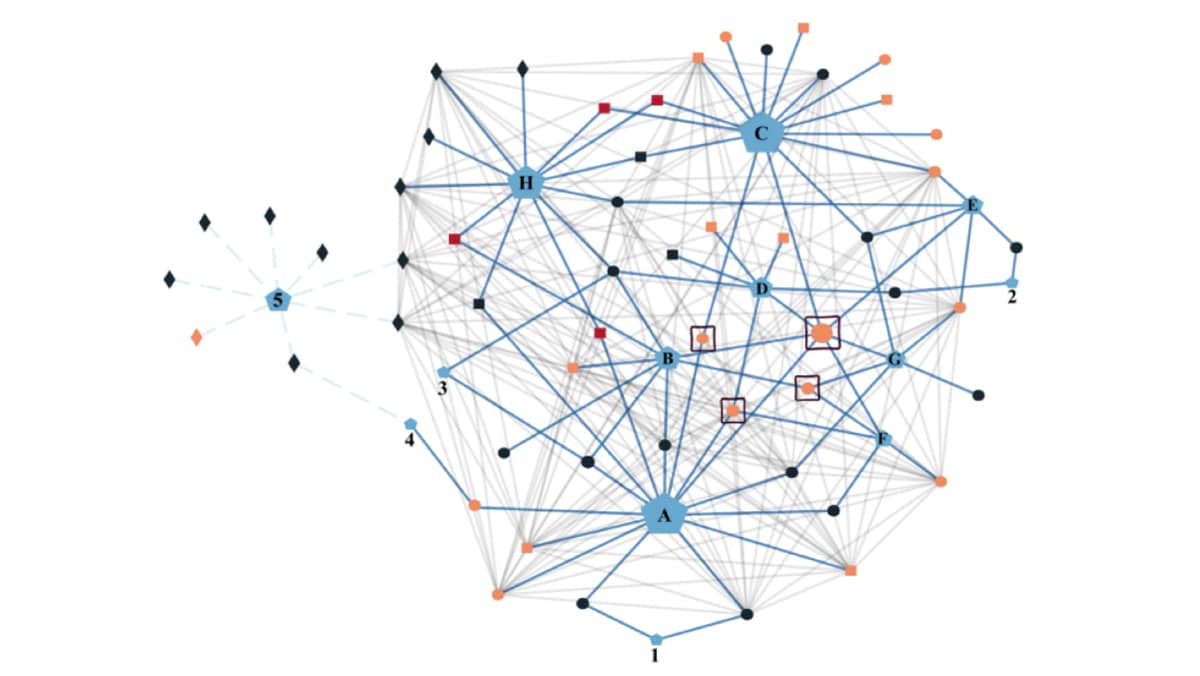What to know
CDC's Division of HIV/AIDS Prevention developed MicrobeTrace, a web-based platform for visualizing disease outbreak data. The program helps investigators identify genomic relationships and epidemiological links among cases in an outbreak. Originally developed to help track outbreaks of HIV and tuberculosis, the development team began training users on how to use the program for SARS-CoV-2 data in 2020.

New use found for established platform
The number of CDC partners using MicrobeTrace increased sharply during the COVID-19 pandemic. Unique users of the platform grew from fewer than 400 in 2018 when it launched to more than 2,100 in 2020. In the first 9 months of 2021, MicrobeTrace had over 2,500 unique users.
"We've seen quite a bit of usage of MicrobeTrace for contact tracing with COVID-19," says Frank Ambrosio, a bioinformatics specialist who worked with the development team in CDC's Division of HIV/AIDS Prevention.

Adjusting the platform for a new purpose
"MicrobeTrace illustrates genetic and epidemiological links among cases in an outbreak, helping investigators identify connections among the data. That can be especially valuable for tracing contacts," Ambrosio says.
"The program uses open-source code and works with a variety of data formats. While it runs in a web browser, the user controls whether the data can be transmitted—an important consideration for people working with sensitive information. MicrobeTrace was originally developed to help CDC track outbreaks of HIV and TB. But when COVID-19 began to spread rapidly in early 2020, the MicrobeTrace team began training other users to assist with the pandemic response," says Bill Switzer, who leads the development team at CDC.
"We realized users could use COVID-specific MicrobeTrace training materials," Switzer says. "So, we built COVID-specific datasets, a user guide, and then prepared a training video for the AMD COVID-19 Genomic Epi Toolkit."
Arizona uses MicrobeTrace to address an outbreak
When COVID-19 struck a community of residential group homes for adults with developmental disabilities in Arizona, investigators there used MicrobeTrace to illuminate a web of connections among staff and residents. They also found connections to several cases at a hospital and in the surrounding community. The findings prompted new precautions within the facility and interventions by public health officials that helped control that outbreak.

"MicrobeTrace was useful for us to visualize person-place linkages of infected staff and residents connected to the developmentally disabled group homes," says Hayley Yaglom, a genomic epidemiologist at the Translational Genomics Research Institute in Flagstaff. "The resources available to get started were very helpful, and the CDC MicrobeTrace team went above and beyond to assist us in understanding how to navigate the tool."
"Don't be afraid to reach out to the team at CDC for guidance," Yaglom says. "Working through case studies together is so beneficial."
You can email CDC's MicrobeTrace team at microbetrace@cdc.gov or CDC's Technical Outreach and Assistance to States Team (TOAST) at toast@cdc.gov.
